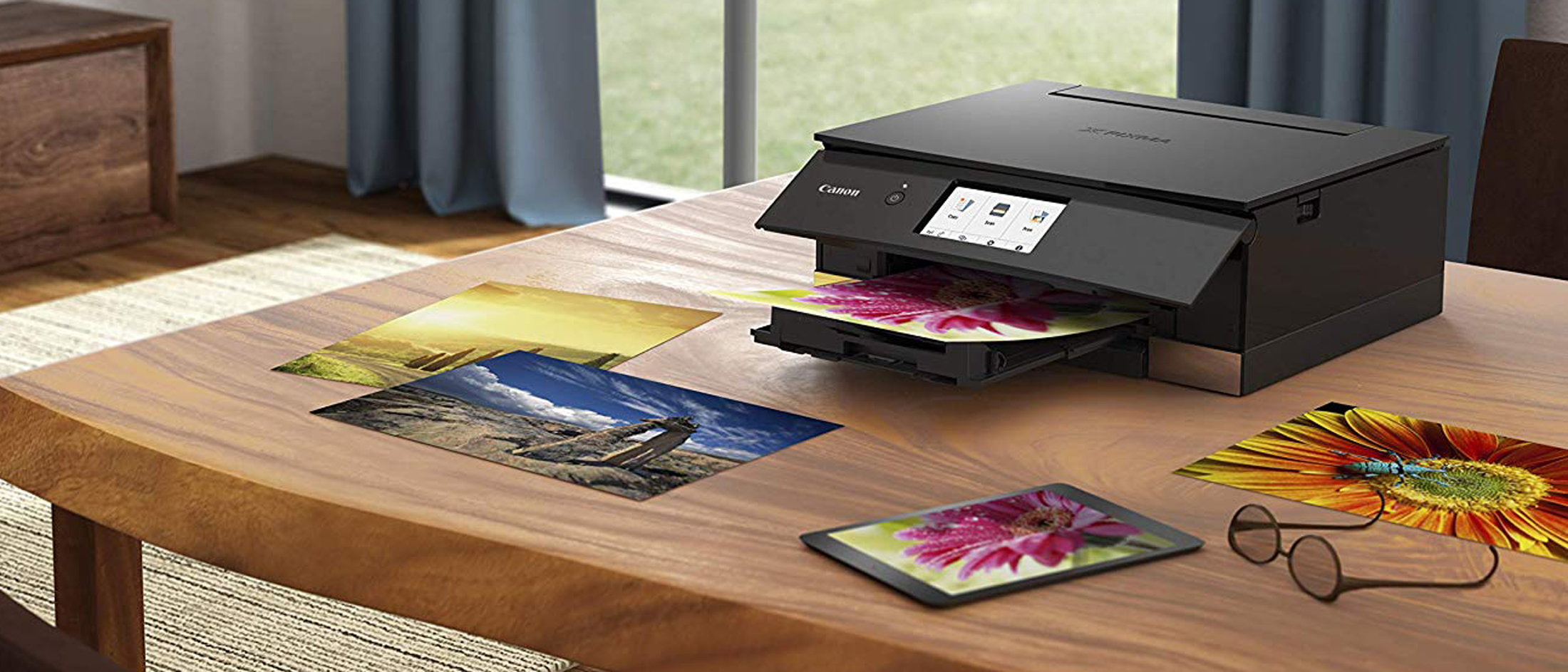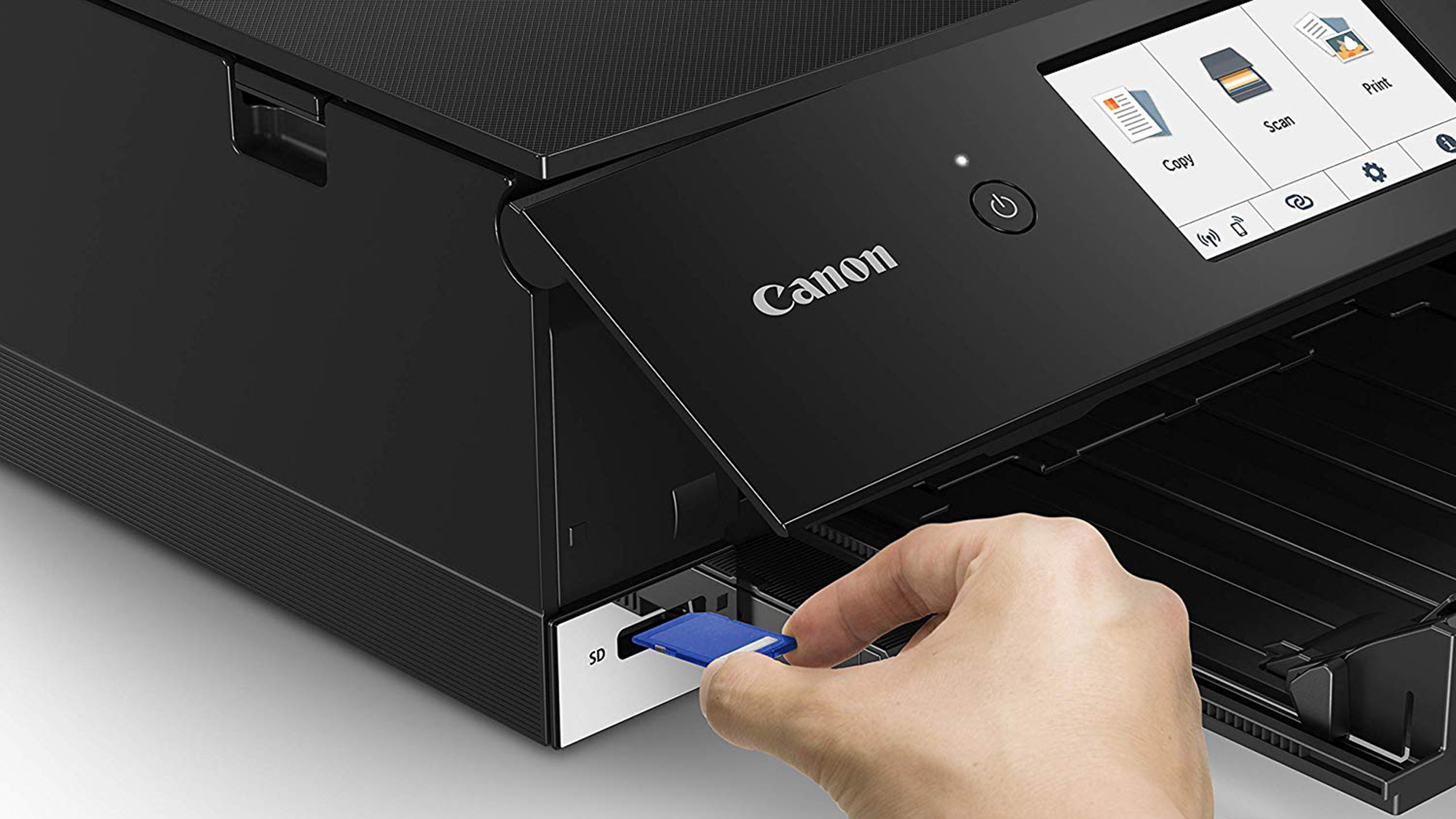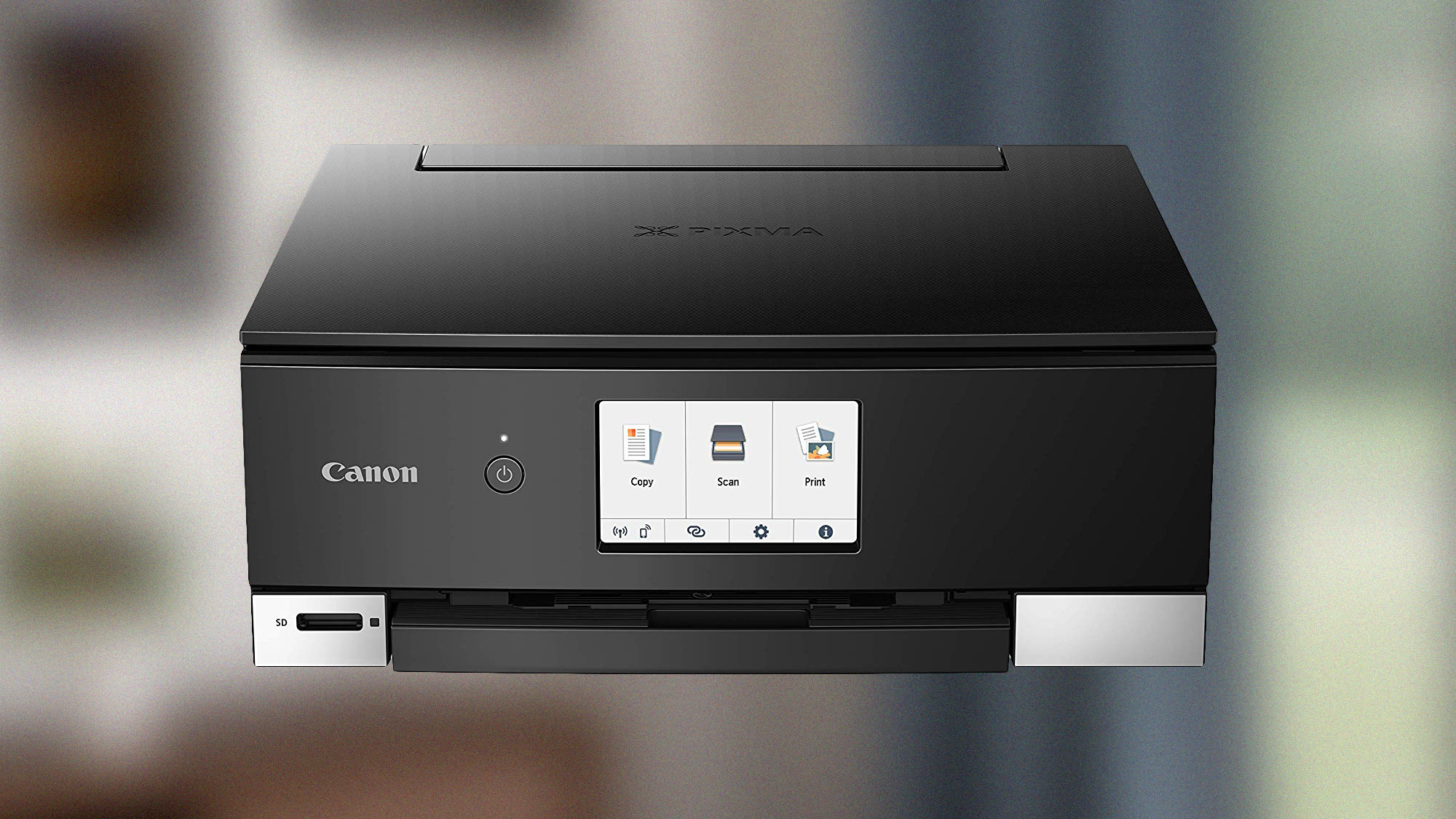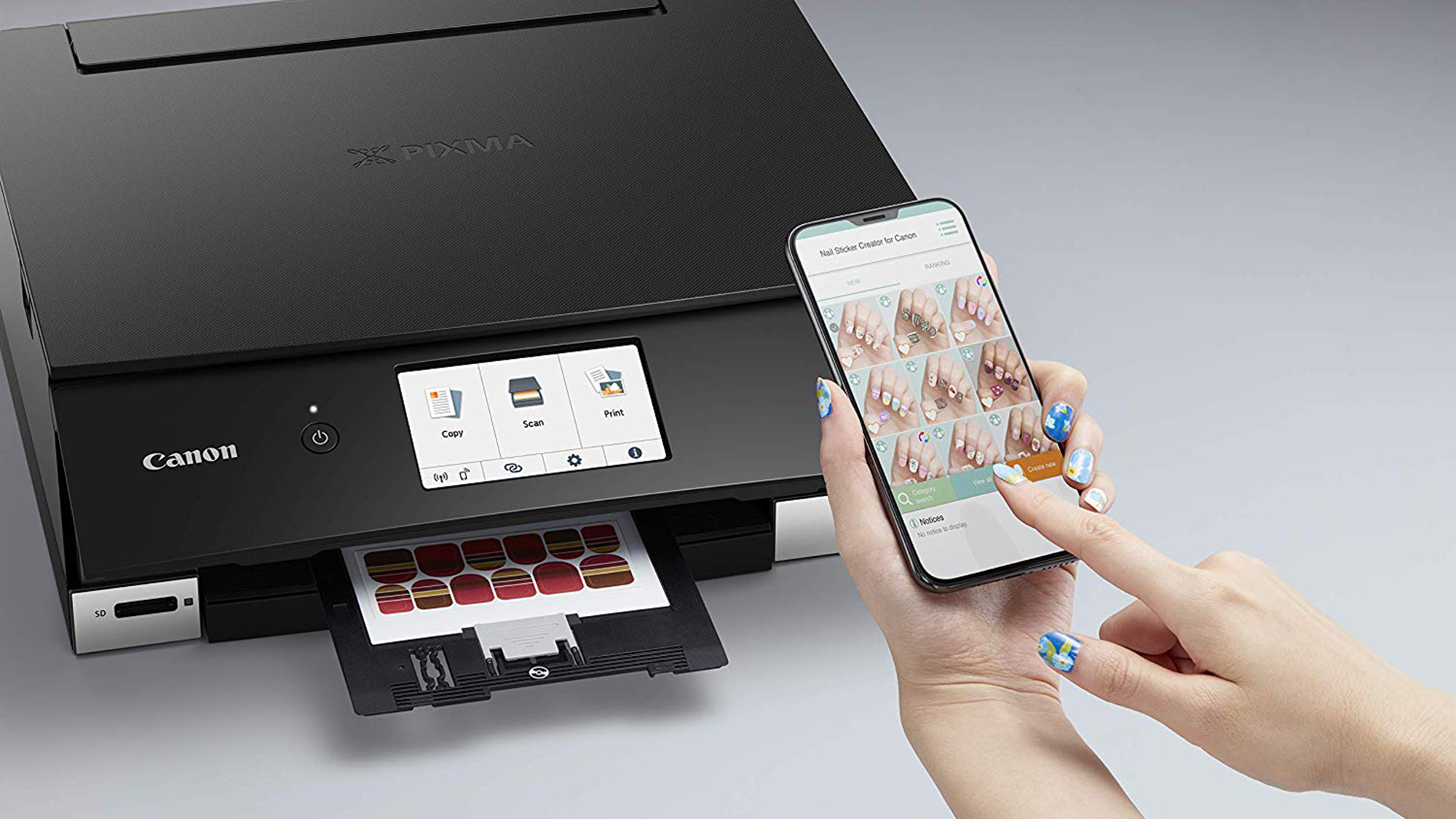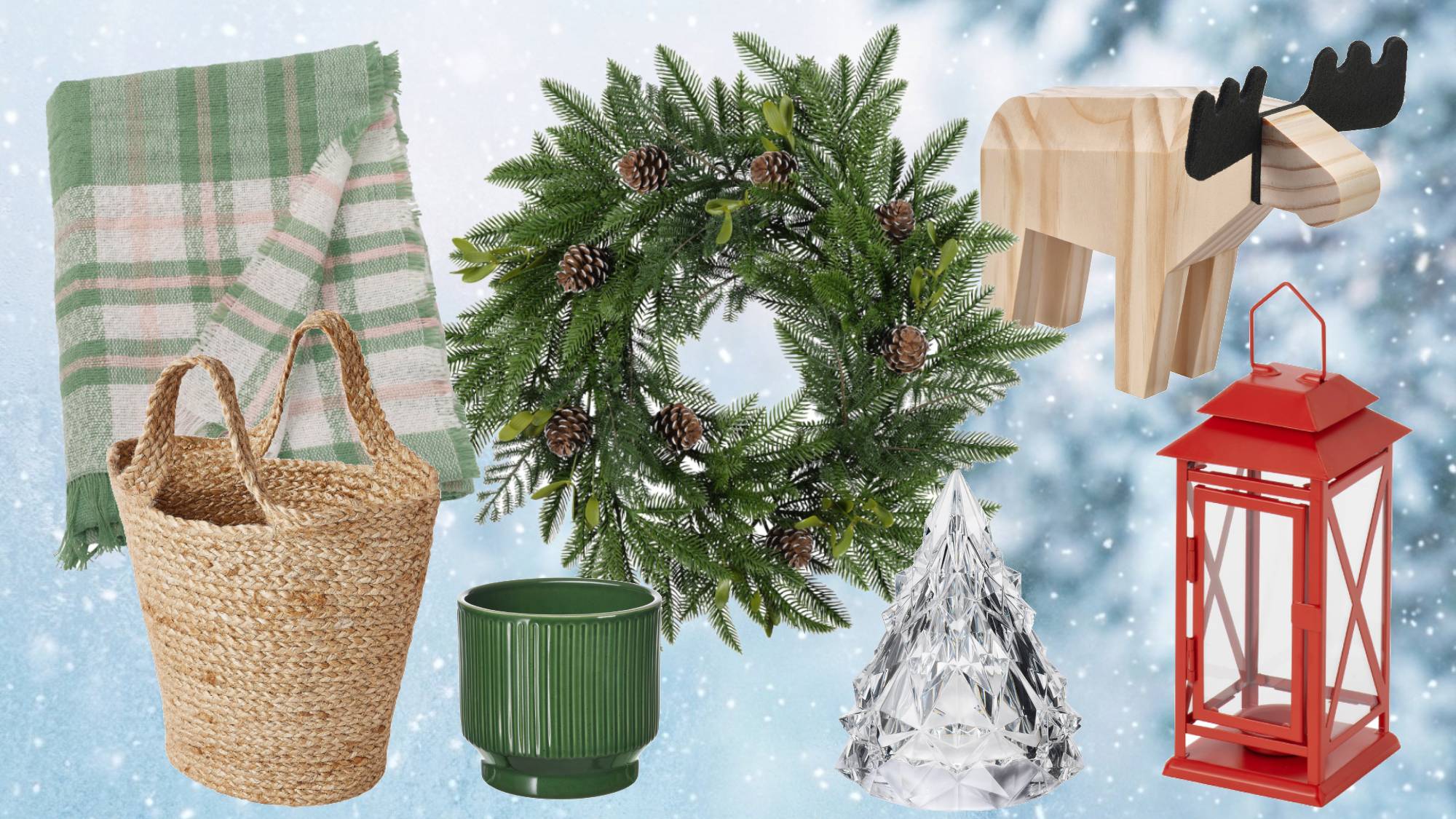Tom's Guide Verdict
The Pixma TS8320 offers plenty of features for photo enthusiasts, but above-average ink costs limit its appeal for general office tasks.
Pros
- +
Very fast photo printing
- +
Quick color scanning
- +
High-quality photo and graphics prints
- +
Duplexer for two-sided printing
- +
CD/DVD disc printing
Cons
- -
Ink costs are above average
- -
Text prints are not razor sharp
- -
Average text printing speed
- -
Black-and-white copying is roughly average speed
Why you can trust Tom's Guide
The Canon Pixma TS8320 ($129) is a compact, inkjet all-in-one that is best suited for photo-printing enthusiasts. It has an SD card slot on its front panel, can print on specially coated CD/DVD discs and offers two paper trays so you can keep plain as well as photo paper loaded.
Most important for photographers, the TS8320 is outfitted with six individual ink cartridges, offering the possibility of a wider color gamut in photo prints by employing a photo blue ink cartridge in addition to two black inks and the traditional cyan, magenta and yellow.
The TS8320 comes in black, white and red, and offers some fun features aimed at smart home enthusiasts: support for Google Assistant, Amazon Alexa and IFTTT (If This Then That).
Design
With its paper trays retracted and the touch-screen control panel folded down against the body, the TS8320 is very compact, measuring roughly 14.6 x 12.5 x 5.5 inches. However, the depth increases to 14 inches when you extend the paper cassette beneath the body to hold letter-size paper. The rear input tray significantly increases the depth; it angles backward when lifted for use, making the total depth about 25 inches. The rear paper tray also increases the height to roughly 11.5 inches.
To operate the TS8320, you use the large, 4.3-inch color touch screen, which makes a big first impression and worked well in our testing. There are not any physical buttons on the control panel other than the power button. The big touch screen offers large virtual buttons for the three main functions (copy, scan and print) and smaller icons along the bottom for making changes to settings. We found the menus well organized and intuitive to navigate.
The SD card slot is on the front panel, at the bottom left next to the paper cassette. This allows you to print photos directly from a camera's memory card, without having to plug it into a PC. There is no USB Direct print port for printing files from a thumb drive.
To operate the TS8320, you use the large, 4.3-inch color touch screen, which makes a big first impression and worked well in our testing.
There is a paper cassette at the bottom of the body and a vertical paper tray on the back. The paper cassette holds up to 100 sheets of plain paper. The rear paper tray can hold up to 100 sheets of plain paper, 20 sheets of 4 x 6-inch photo paper, or 10 sheets of 5 x 7-inch photo paper. Both trays offer automatic paper detection; after removing the cassette or loading paper into the rear tray, the touch screen asks you to confirm the paper type detected. The output tray sits atop the paper cassette and extends automatically (if it's not already extended) when a print job is started.
Get instant access to breaking news, the hottest reviews, great deals and helpful tips.
Beneath the output tray, there is a storage slot for the CD/DVD disc holder. Before printing onto a coated disc, you push in the output tray, remove the disc holder and insert it into a dedicated disc slot above the output tray.
The ink cartridges are easy to load. The bay sits behind a door on the front panel. Three capacities are offered: standard, XL high yield and XXL high yield.
The TS8320 has a duplexer for making two-sided prints. It does not have an automatic document feeder for making multipage copies or scans. The flatbed scanner can accommodate documents up to 8.5 x 11.7 inches (letter/A4); the scanner lid's hinges do not offer any resistance and you will need to lift the lid a full 90 degrees for it to support itself.
You can connect wirelessly to the TS8320 using Bluetooth or Wi-Fi (both 2.4 and 5.0 GHz are supported). If you have Google Assistant or Amazon Alexa, you can use it to send voice commands to the TS8320, although the printer's manual offers no instructions on this feature. On an iPhone 7, telling Siri to "print a document" launched the Canon Print app. The printer also supports the IFTTT web service, which allows you to set up actions based on changed conditions in another web service, such as Gmail, Facebook and the like.
The USB port allows you to connect directly to a PC. The port is on the back panel and is recessed in a narrow cavity, which makes it a little difficult to access. It took me a few tries to connect the USB cable.
Print speed
Text printing was roughly average in speed. The TS8320 printed our five-page test document in 34.4 seconds, or 8.7 pages per minute (ppm), versus the category average of 9 ppm for comparable models. The Editor's Choice Canon Pixma TS9120 printed the same document in just under 27 seconds (11.2 ppm).

Our six-page, mixed-text and graphics PDF printed more quickly that average, arriving in 1 minute and 52 seconds, or 3.5 ppm, versus the average of 2 minutes and 14 seconds, or 2.7 ppm.
Photo printing was impressively fast. Our letter-size, high-resolution glossy print emerged in 2 minutes and 2 seconds — less than half the average time of 4 minutes and 15 seconds. The Canon TS9120 was similarly fast, printing the photo 5 seconds faster than the TS8320. The Epson Expression XP-640 was slower, taking 2 minutes and 33 seconds.
Using its duplexer, the TS8320 printed a two-sided 10-page text document in 3 minutes and 13 seconds, or 3.1 ppm. This was nearly identical to the Canon TS9120 and the average for comparable duplex inkjet models. The Epson XP-640, however, was much faster, at 5.5 ppm.
The TS8320 made a two-sided print of our six-page color PDF in 2 minutes and 37 seconds, or 2.3 ppm. (This was, again, nearly identical to the TS9120's speed on this test.) This was faster than the category average of 1.8 ppm on this test.
Copy and scan speed
The TS8320 made a color copy in 23 seconds, which was faster than the category average of 27.7 seconds. By comparison, the TS9120 made a color copy in 17.3 seconds; but the fastest model to date, the HP OfficeJet Pro 9025, made a color copy in just 12.5 seconds.
The TS8320 made black-and-white copies at roughly average speed, making a copy in 14.6 seconds, compared with the category average of 15.8 seconds. (The fastest model on this test is the HP OfficeJet Pro 9025, at 8.7 seconds.)
The TS8320 made high-resolution color scans quickly, creating a 600-dpi JPEG in 44.6 seconds — significantly faster than the average of 1 minute and 8 seconds.
The TS8320 was slower than the average at making black-and-white scans, however, creating a 300-dpi PDF in 14.4 seconds, versus the average of 11 seconds. The Canon TS9120 made the same scan in 7.7 seconds.
Print quality
Text prints from the TS8320 looked good, but not great. Letterforms looked adequately dark, but up-close edges looked somewhat bumpy.
Graphics looked more impressive, printing with well-saturated, natural-looking colors and accurate contrast. Details looked sharp and midtone transitions looked smooth. Some very mild banding was evident in flat areas, as were the borders of text boxes in our test PDF. Duplex prints looked just as good as single-sided prints.
Glossy photos had plenty of detail and accurate textures. I liked the prints I got on glossy and matte papers. Colors looked well saturated and very natural. There were differences, however, compared with glossy prints from the Epson XP-640, for example: Our test portrait's light complexion looked "cooler" and was not "warmed up" like the Epson's, with reds and yellows more saturated in the skin tone.
If you have Google Assistant or Amazon Alexa, you can use it to send voice commands to the TS8320.
On our landscape photo, however, this same tendency of the Epson model added warmth and brightness to some green shades that, when set next to the Canon print, would look a little unnatural to some eyes. In the Canon print's favor, however, was the appearance of more detail in dark midtones that looked slightly blocked up in the Epson's print. This phenomenon was the opposite, however, in our still life of richly colored food. The Canon's print hyped up the reds and yellows to create a very saturated but arguably slightly unnatural-looking print, while the Epson XP-640's treatment of reds and yellows looked slightly less saturated and arguably more natural.
The TS8320 made attractive, accurate copies of graphics. Copies of magazine pages produced text that didn't look quite as sharp as the original. Overall, copies of graphics looked very close to the original, with attractive colors and plenty of detail, although there was some mild banding in copies of both color graphics and black-and-white graphics.
Scan quality was high, capturing natural-looking colors and producing smooth midtone transitions. Shadow areas in scanned color photographs tended to be too dark, however, losing fine details. Black-and-white scans to PDF looked sharp in general, with accurate reproductions of graphics, although they tended to look a little too dark overall, with blocked-up dark shades losing some detail.
Ink cost and yield
The TS8320 uses six ink cartridges: a pigment black (primarily for text), a dye-based black (primarily for graphics) and four dye-based colors (cyan, magenta, yellow and photo blue). Three capacities of ink cartridges are offered: standard and two levels of high yield (XL and XXL).
Overall, according to our calculations, the TS8320's ink costs are higher than the average for comparable inkjet printers we've tested. For the following costs, we calculated using the cost of individual ink cartridges.
Using standard cartridges, the TS8320 offers costs per page of 9.5 cents and 23.6 cents for text and graphics, respectively, versus the averages of 7 cents for text and 19.6 cents for graphics. By comparison, the Epson XP-640 has lower-than-average costs per page of 5.8 cents and 18.8 cents, respectively.
Photo printing was impressively fast — less than half the average time.
Using high-yield XL cartridges, costs per page are an estimated 7.1 cents for text and 19.5 cents for graphics, respectively, compared with the averages: 5.4 cents for text and 14.1 cents for graphics. Using the XXL cartridges drops the text-page cost to 6.4 cents, and graphics pages to 16.8 cents, but this is still higher than the average for regular high-yield cartridges. Using high-yield cartridges, the Epson XP-640 prints text for less than half the cost per page, at 3.1 cents, and color graphics at a much lower cost of 10 cents per page.
Canon does offer some multicartridge value packs that can cut ink costs. In all cases, these value packs do not include the photo blue cartridge, which must be bought separately. The five-pack offering includes all the other inks, while the four-pack combos include only the pigment black, not the dye black.
Based on our calculations, buying the five-pack bundle of standard cartridges should reduce color page ink costs from 23.3 cents to 19.6 cents, while the four-pack product, which does not include the pigment black ink, will only reduce color costs to 22 cents per page. The five-pack group, including the XL, pigment black and four standard-yield dye inks, has a cost per color page of 19.1 cents, compared with 21.6 cents when purchasing individual cartridges. The lowest color page cost is still 16.8 cents with the XXL cartridges, which were not available in multipacks at press time.
Using estimated yields, we also calculated ink costs for printing 4 x 6-inch glossy photos. As with plain paper printing, the lowest cost per 4 x 6 was with the XXL cartridges, at 31.6 cents. (A complete set of XXL cartridges costs $169.94.) Printing a 4 x 6 photo with standard cartridges is pricier, at 48.6 cents per print, though buying the five-pack set with the XL pigment black and four standard-yield dye inks reduces this to 41.2 cents.
However, you should also consider the cost of paper — not just ink — for printing glossy photos. A pack of 100 sheets of Photo Paper Plus Glossy costs $10.99, or 11 cents per sheet.
Setup and software
Basic setup of the TS8320 was straightforward. You remove half a dozen pieces of orange shipping tape and some cellophane. Plug in the printer, turn it on and select your language on the touch screen, which then walks you through the ink cartridge installation, showing a graphic of each cartridge as you install it.
Although a CD-ROM comes in the box, the printed start guide's large print instructs you to go online (ij.start.canon>setup>go>start) to download the software. (The CD-ROM setup is covered at the bottom of the page, in small print.)
The software download includes the printer driver, scan utility (Win/Mac) and a Scan Utility Lite option for Macs. The online download, however, did not include the Easy-PhotoPrint Editor application. I had to find that myself on the TS8320's Drivers & Downloads page. The same was true of the online software installation I ran for a Mac running OS 10.12 (Sierra). Easy-PhotoPrint Editor is used to create and print collages, calendars, cards, stickers and CD/DVD disc labels.
Ink costs are higher than the average for comparable inkjet printers we've tested.
In addition, the TS8320 has a disc label copy function you can use from the touch screen, without having to use a PC. You place a printed disc on the flatbed scanner, insert a blank disc in the CD/DVD tray and follow the on-screen prompts. I used this to copy a disc I had printed on another inkjet, with a label of a color photograph. The TS8320's copy looked just as good as the original.
Wireless setup was easy to find in the touch-screen menu. Using the WPS method, I pressed the WPS button on my wireless router to initiate the connection and put the TS8320 on my network.
For mobile devices, you do not have to use the Canon Print app. The TS8320 supports AirPrint for iOS and Google Cloud Print for Android, as well as the Mopria Print Service. However, when using AirPrint to print a document from an iPhone 7, it chose the rear paper tray rather than the main paper cassette (and offered no way to select between the two). The rear paper tray was empty on one occasion, and on another my document printed on the glossy photo paper in the rear tray, which I did not intend to do. Using the Canon Print app, selecting plain paper as the media type was sufficient for the TS8320 to choose the main paper cassette rather than the rear tray loaded with glossy photo paper.
Canon also offers cloud printing and social media integration via its IJ Cloud Print service, which you initiate by going to a designated URL from your mobile device. IJ Cloud Print offers links for printing from various cloud services. You set up your account using FaceBook, Google or an email address, and then you can print from various social media accounts and cloud apps.
The TS8320 started up very quickly, illuminating its touch screen in just 3 seconds. Not surprisingly, making a copy right away took longer than usual. Rather than the test time of 14.6 seconds, it took 23 seconds for the unit to fully warm up and make the copy.
Bottom line
The TS8320 offers a lot of features for photo enthusiasts, including high photo print quality using six inks, a second specialty media paper tray and an SD card slot. The large color touch screen is handy, and the ability to print onto CD/DVD discs adds to the fun, as does the cloud printing integration of your social media accounts via mobile device. Photo printing and color scanning are fast, though other tasks are done at roughly average speeds. Two-sided printing adds a little versatility, although less-than-razor-sharp text prints don't make this model a good fit for a home office — nor do the higher-than-average ink costs, despite two tiers of high-yield ink cartridges. Take a look at our Canon promo codes for ways to save on your order.
Our favorite photo printer, the Epson Expression XP-640, offers comparably high photo quality, faster color printing on plain paper and quicker black-and-white copying. Like the Canon, the XP-640's text prints are not quite razor sharp, and its scan quality was inconsistent in our testing. It also lacks a touch screen, and its photo printing is slower. If faster photo printing or a large touch screen justifies the higher ongoing expense, the photo-centric offerings of the TS8320 are likely to be a pleasure to use.
Eric Butterfield is a freelance writer and musician from California. His work has appeared in PC World magazine, CNET, Taproot, and Alter Action — plus Tom's Guide, of course — while his music has appeared in more than 260 TV show episodes for major networks such as NBC, Hulu, BBC America, and more. You can check out his work on Spotify.
